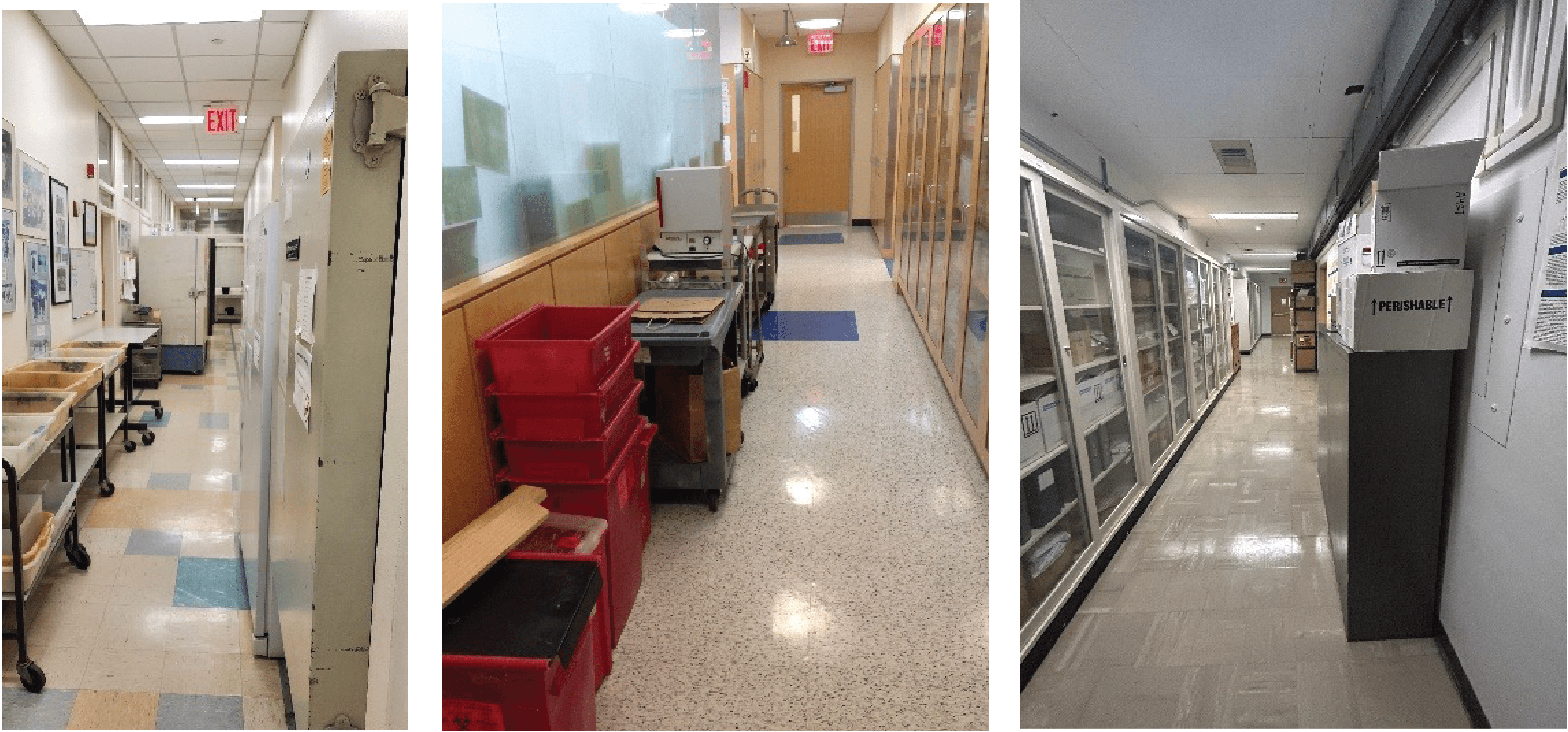By Austin Hollister, Fire Safety & Emergency Manager, NYS Code Enforcement Officer
If there is one thing we can all agree on within the confines of NYC and especially Manhattan, the congestion problem is real! Between vehicle traffic, crowded public transportation, and even trying to find space to hang your coat in the closet in your workspace, space is tight. Our buildings and spaces were constructed before our current needs, and often, “free space” erroneously expands to the corridors outside the lab spaces.
NYC has set life safety rules and codes that prohibit where you can store combustibles (paper, cardboard, plastics) and non-combustibles (metal, masonry, ceramics) and eliminate hazards within the means of egress in your space. These rules prohibit storing combustible and non-combustible materials and equipment in corridors that lead to emergency exits, stairwells, and elevator lobbies. See examples below.

NYC Fire Code 1027.3:
- “All required means of egress, including each exit, exit access, and exit discharge, shall be continuously maintained free from obstructions and impediments to immediate use in the event of fire or other emergency. An exit or exit passageway shall not be used for any purpose inconsistent with its use as a means of egress, including storage of combustible or noncombustible materials, except as authorized by law, rule, or regulation.”
EHS Fire Safety reminds you that it is against New York City Building & Fire Codes and our WCM Fire Safety & Emergency Action Plan Manual and Corridor Safety & Emergency Egress Update. And we need your help to keep our paths as clear as possible.


